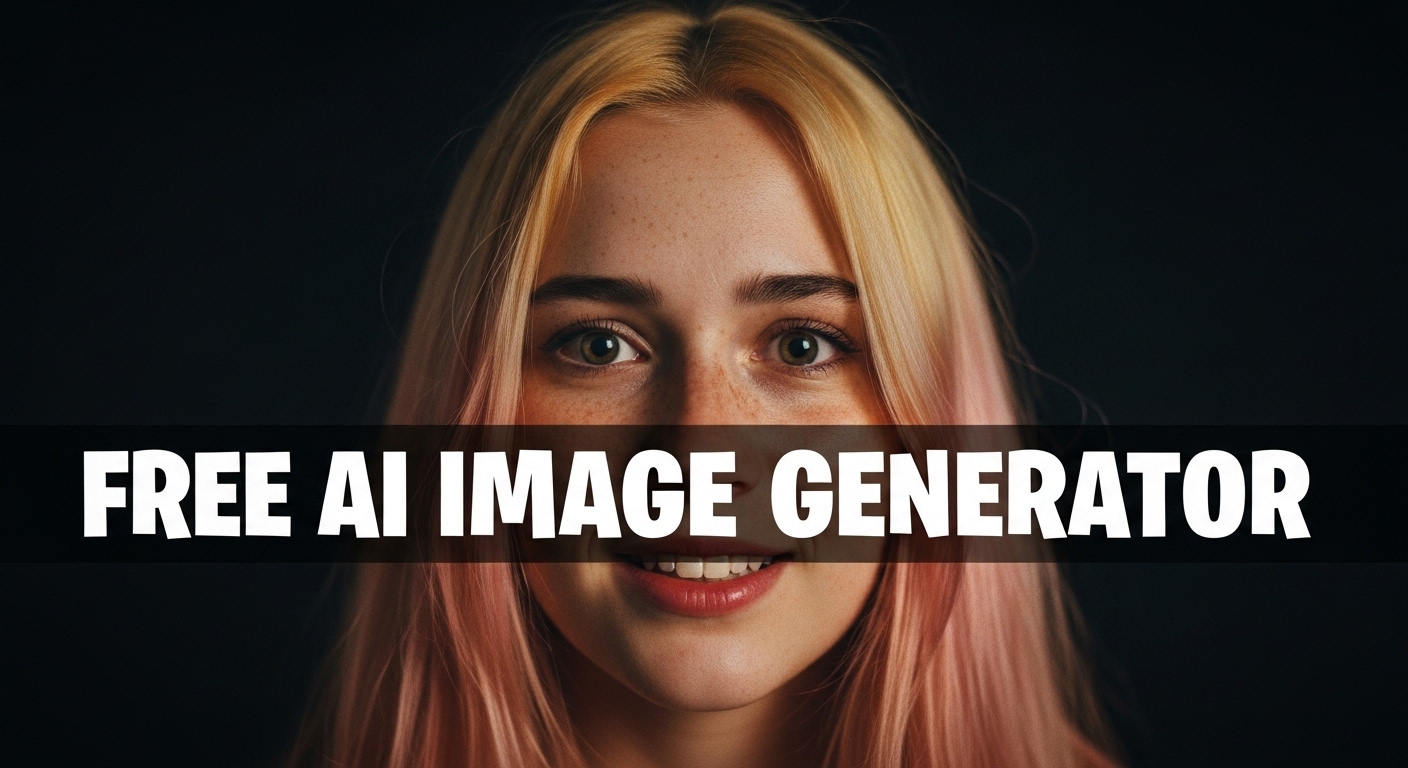Use this Formula to create High-Converting Facebook Ad Copy

Facebook ads cost money. Every click you pay for needs to count. In 2025, average conversion rates hover around 8.95%, which means over 90% of people who click your ad won’t buy. Your copy is the fix.
This guide shows you the exact formulas top brands use to write ads that sell. No fancy marketing speak. Just proven structures that push people from “maybe” to “yes.” By the end, you’ll know how to craft ads that hook, hold, and convert.
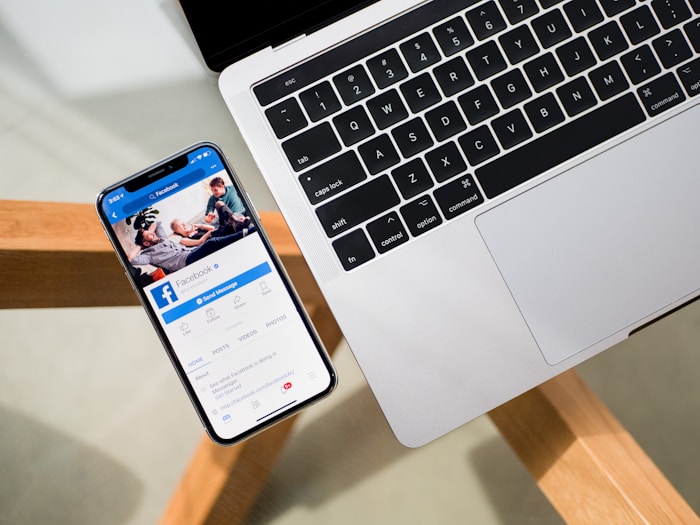
Table of Contents
- What Facebook Ad Copy Actually Does
- The Brain Science Behind Buying
- AIDA: The Classic Formula That Still Works
- PAS: Hit the Pain Point First
- BAB: Show Them the After
- The 4 C’s Formula for Trust
- Emotional Triggers That Make People Act
- How to Pick the Right Formula
- Test Until You Win
- 5 Mistakes That Kill Your Ads
- FAQ
- Key Takeaways
What Facebook Ad Copy Actually Does
Facebook ad copy is the text that sits above your visual. It’s not your image. It’s not your targeting. It’s the words that turn a scroll into a stop.
Your copy needs to do three things fast:
- Grab attention in the first line
- Show why someone should care
- Push them to click
Most advertisers fail at step one. They write things like “Check out our new product” or “We’re excited to announce.” Nobody cares. Your audience is scrolling to see baby photos and vacation pics. You have two seconds on desktop, 1.7 seconds on mobile to stop them.
The AI answer generator can help you brainstorm attention-grabbing opening lines, but the formula is what makes them convert.

The Brain Science Behind Buying
People don’t buy based on logic. They buy based on emotion, then use logic to justify the purchase. This isn’t theory. Research shows a 28% increase in conversion rates when ads trigger emotional responses.
Here’s what happens in your customer’s brain:
- They see your ad
- Their brain asks: “Does this matter to me?”
- If yes, emotion kicks in (fear, desire, curiosity)
- Logic follows to justify the feeling
- They click or scroll past
Your copy needs to hit the emotional trigger first. Fear of missing out works. So does the relief of solving a problem. Excitement about transformation. Pick one emotion per ad and hammer it.
The Context Shift Nobody Talks About
According to recent ad analysis, a parent at 11 PM shops differently than at 11 AM. Same person, different emotional state. The best ads match the moment, not just the demographic.
Example: Selling meal kits? Don’t write “Healthy dinners for busy families.” Write: “It’s 8 PM. Kids are fed. You have 30 minutes before bed. Don’t waste it cooking.”

AIDA: The Classic Formula That Still Works
AIDA stands for Attention, Interest, Desire, Action. It’s been around since 1898 and it still crushes. Here’s why it works and how to use it.
Attention: Stop the Scroll
Your first line needs to slap. Not gently tap. Slap.
Bad: “Introducing our new skincare line”
Good: “Your skin is aging faster than it should”
Use these attention-grabbers:
- Ask a painful question: “Still wasting money on ads that don’t work?”
- Make a bold claim: “Cut your ad spend in half while doubling sales”
- Call out a specific person: “Hey yoga instructors drowning in admin work”
- Drop a shocking stat: “87% of Facebook ads fail in the first week”
Interest: Hook Them Deeper
Now that you have attention, build interest. Show them you understand their problem.
“You’re not alone. Most online stores burn through $2,000 monthly on ads and see nothing back. Your products are good. Your targeting is fine. But your copy? It’s leaving money on the table.”
Desire: Paint the After Picture
This is where you shift from problem to possibility. Make them want what you’re selling.
“Imagine checking your phone and seeing three new orders before breakfast. No more guessing which ad words work. No more watching your budget disappear. Just proven copy formulas that turn browsers into buyers.”
Action: Tell Them What to Do
Don’t be shy. Tell people exactly what to click.
Weak: “Learn More”
Strong: “Get Your Free Copy Template Now”
The Facebook post generator can help you draft AIDA-structured posts quickly, but always customize for your specific offer.
| AIDA Stage | Goal | Example |
|---|---|---|
| Attention | Stop scrolling | “Your SaaS website is killing your growth” |
| Interest | Build relevance | “Most founders don’t realize their homepage is scaring away buyers” |
| Desire | Create want | “Picture closing 3 demos this week instead of getting ghosted” |
| Action | Get the click | “Book your free website audit now” |

PAS: Hit the Pain Point First
PAS stands for Problem, Agitate, Solution. This formula works when you’re selling to people who know they have a problem but haven’t fixed it yet.
Problem: Name What Hurts
Start by calling out the exact problem your customer faces.
“Your Facebook ads are eating your budget. Every day you’re paying for clicks that go nowhere. Last month you spent $1,200 and made back $300.”
Agitate: Make It Worse
This feels mean but it works. Poke the wound.
“And it’s not getting better. Each week your cost per click creeps up. Your competitors are stealing your customers with better messaging. Meanwhile, you’re Googling ‘how to write ads’ at midnight, knowing tomorrow you’ll just do the same thing that didn’t work yesterday.”
Solution: Hand Them the Fix
Now you swoop in as the hero.
“There’s a faster way. Three proven formulas that take 10 minutes to write and double your conversion rate. No copywriting degree needed. Just fill in the blanks and watch your ROI flip positive.”
PAS works because it mirrors how people actually think about problems. They’re aware something’s wrong. They’re frustrated. They’re ready for a solution. You just need to verbalize what’s already in their head.
Tools like the sales pitch generator can structure your PAS framework, but you need to customize the pain points to match your audience’s actual struggles.
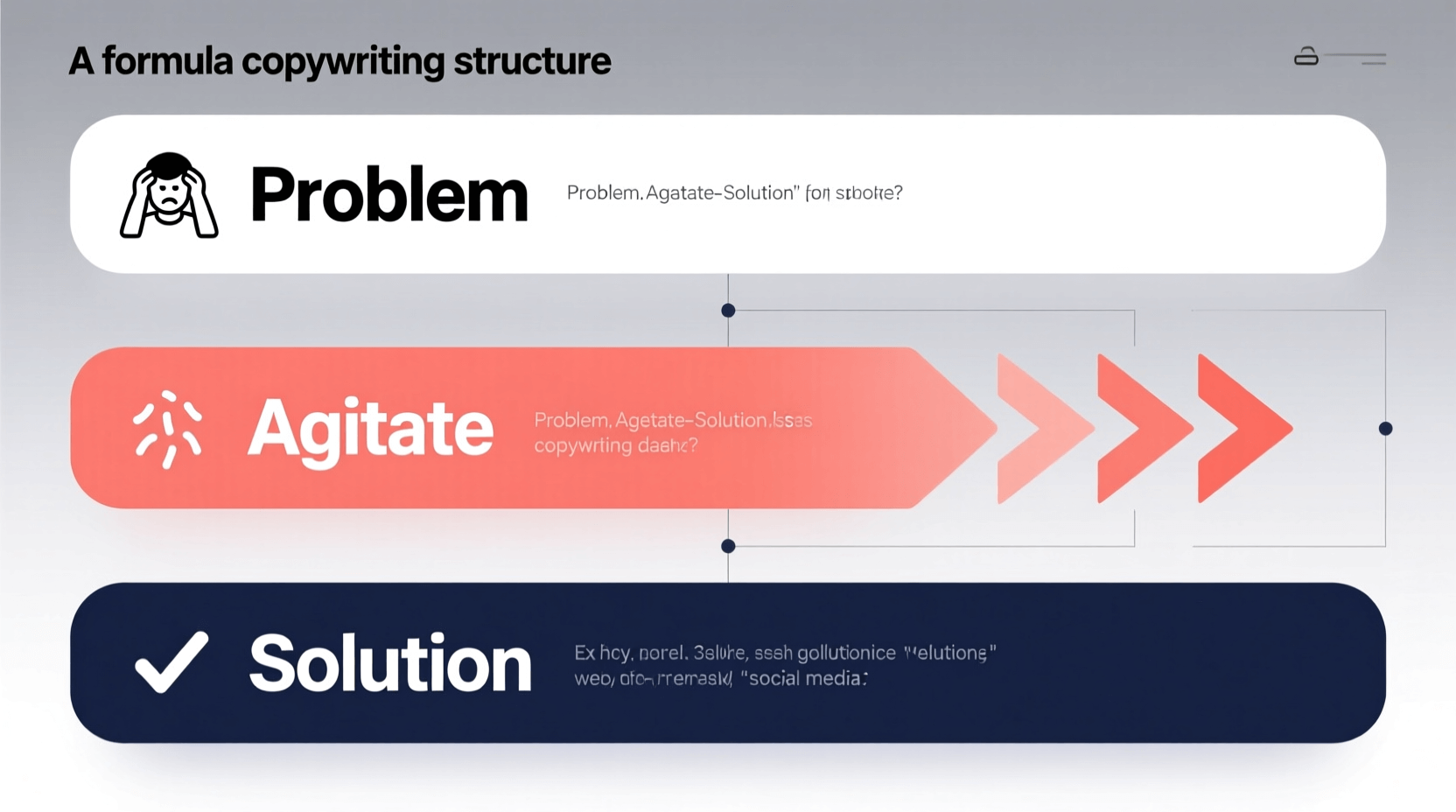
BAB: Show Them the After
BAB stands for Before, After, Bridge. This formula sells transformation. It’s perfect when you’re offering something that changes a person’s situation.
Before: Paint the Current State
“Right now you’re spending 4 hours a week writing ad copy. You stare at blank screens. You copy competitors’ ads and change a few words. Your click-through rate sits at 0.8% and you don’t know why.”
After: Show the Dream State
“Picture this instead: You open your laptop Monday morning with five ad variations already written. Each one tested by a system that knows what converts. Your click-through rate hits 2.3%. You spend those saved hours on strategy, not struggling with words.”
Bridge: Connect the Two
“The bridge is simple. Three copywriting formulas. You plug in your offer, your audience’s pain point, and the transformation you provide. Five minutes later, you have ad copy that works.”
BAB works because humans are wired for stories. We understand before and after. We want transformation. This formula gives them both in seconds.
Need help visualizing transformations? The story prompt generator can spark ideas, though you’ll adapt them for sales copy.
The 4 C’s Formula for Trust
The 4 C’s formula focuses on building credibility. Use it when you’re selling to skeptical audiences or in competitive markets.
Clear: No Confusion
Your offer should be obvious in the first line. No riddles. No clever wordplay.
Bad: “Discover the secret to better marketing”
Good: “Get 3 Facebook ad templates that converted at 12%”
Concise: Cut the Fat
Every word needs to earn its place. Facebook ad experts recommend testing both short and long copy, but concise always wins for cold traffic.
Before: “We have developed a comprehensive solution that helps businesses of all sizes improve their advertising performance through proven methodologies”
After: “Triple your ad ROI with formulas top brands use”
Compelling: Give Them a Reason
Why should they care? Lead with the benefit.
“Stop guessing which ad words work. These formulas removed the guesswork for 1,200+ businesses.”
Credible: Prove It
Back up your claims. Use numbers, testimonials, or specific results.
Weak: “Our system works great”
Strong: “Sarah used this formula and went from 0.9% to 3.2% CTR in two weeks”
The 4 C’s build trust fast. When someone doesn’t know your brand, credibility matters more than creativity.
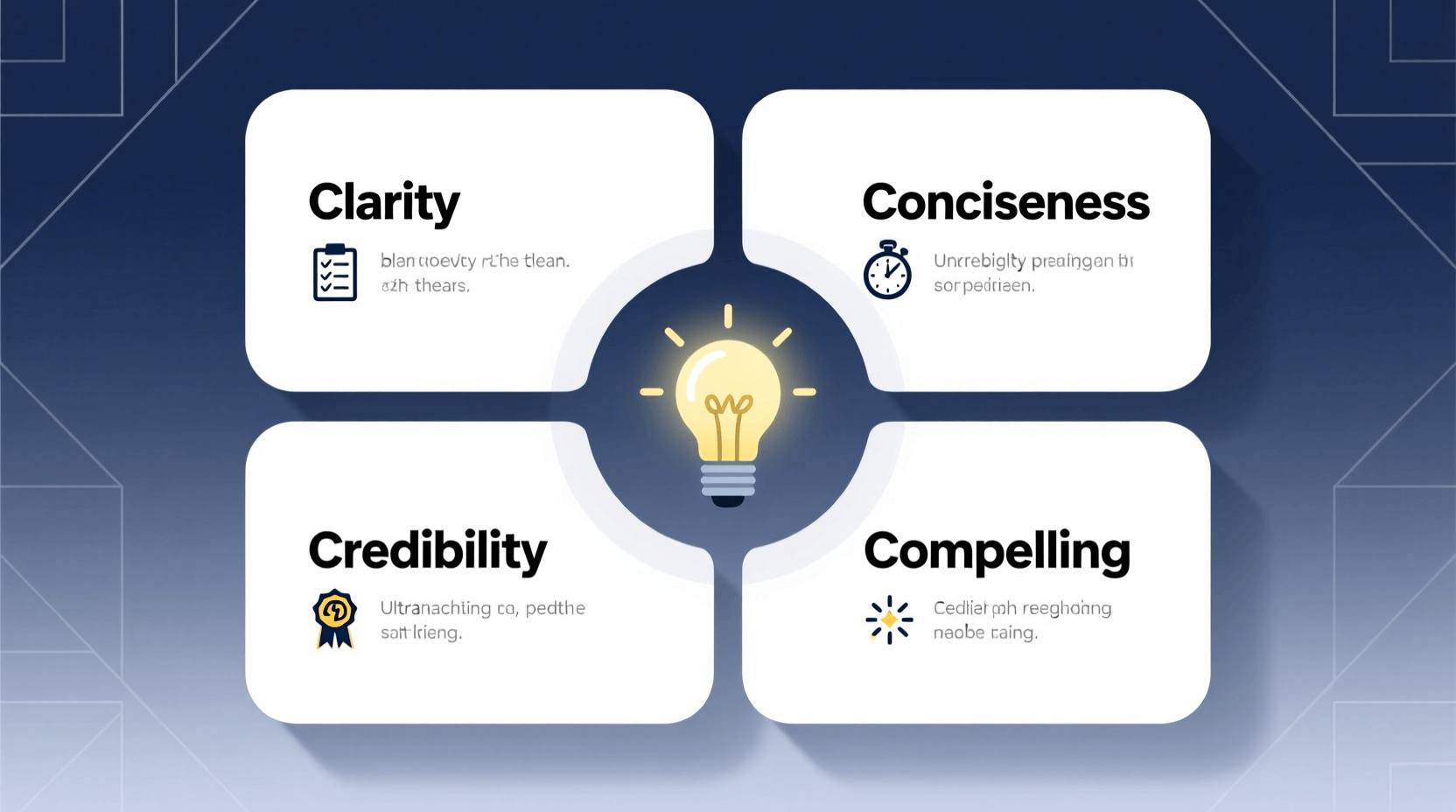
Emotional Triggers That Make People Act
Every formula works better when you add emotional triggers. Here are the ones that convert:
1. FOMO (Fear of Missing Out)
People hate being left behind. Scarcity and urgency trigger FOMO and push people to act now instead of later.
“Only 7 spots left for November”
“Price goes up tomorrow”
“Last chance before we close enrollment”
2. Relief
Selling a solution to a painful problem? Show the relief they’ll feel.
“Finally stop worrying about your ad budget”
“No more Sunday night ad writing panic”
“Sleep knowing your campaigns actually work”
3. Curiosity
Humans can’t stand unanswered questions. Use it.
“The ad formula Nike doesn’t want you to see”
“What we learned after spending $2M on Facebook ads”
“The one word that doubled our conversion rate”
4. Belonging
People want to be part of the winning group.
“Join 10,000 marketers who stopped wasting ad budget”
“The formula Shopify stores use to scale past $100K”
“What the top 5% of advertisers know about copy”
5. Transformation
Show them the person they’ll become.
“From overwhelmed founder to confident marketer in 30 days”
“Stop being the bottleneck in your own business”
“Become the marketer who always hits their numbers”
Pick one emotional trigger per ad. Stack two or three and it feels manipulative. Stick with one and hammer it.
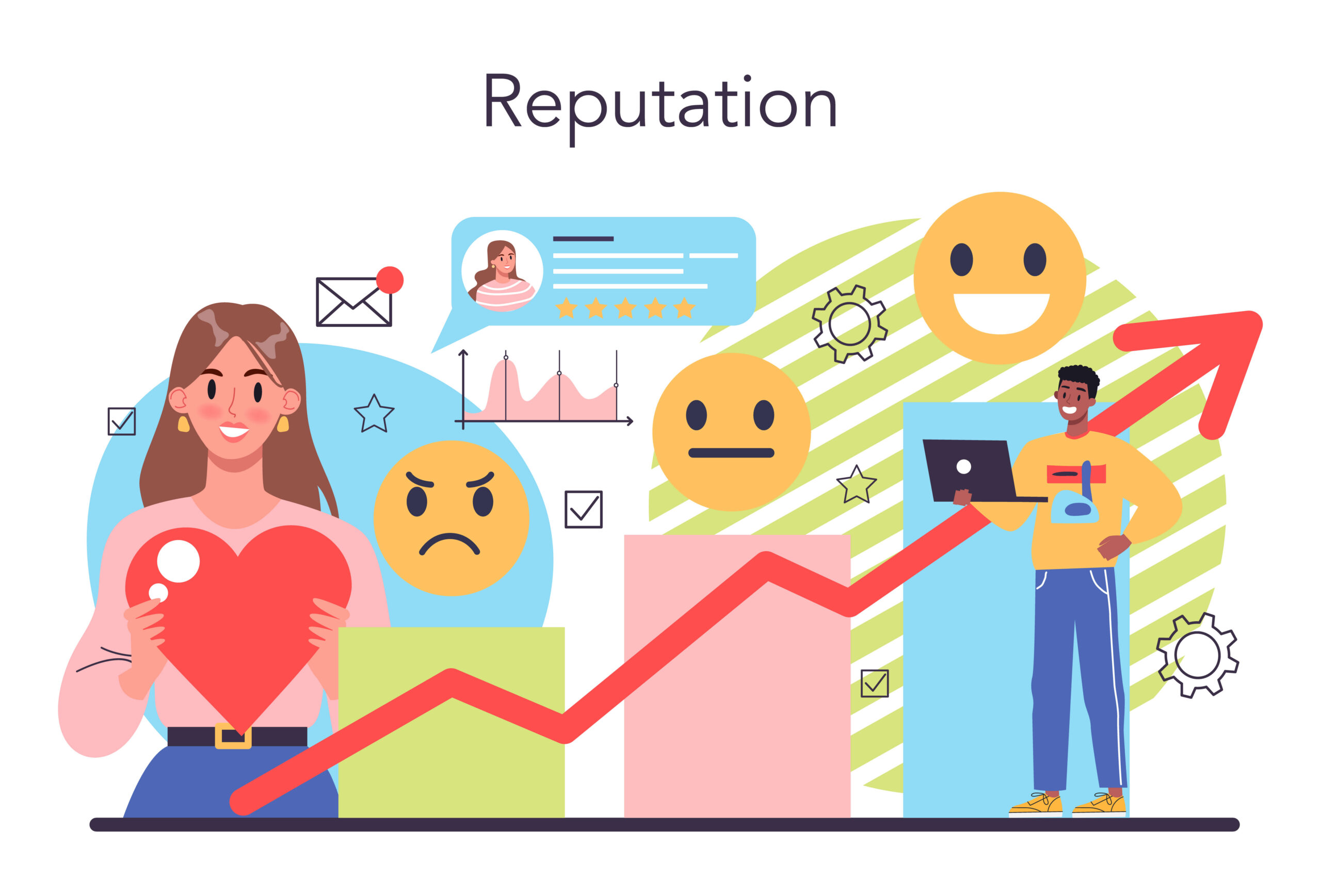
How to Pick the Right Formula
You’ve got four formulas: AIDA, PAS, BAB, and 4 C’s. Which one do you use? Here’s how to decide:
Use AIDA When:
- Your audience doesn’t know they have a problem yet
- You’re introducing something new
- You need to build awareness first
Use PAS When:
- Your audience knows they have a problem
- You’re in a competitive market
- The pain point is urgent or expensive
Use BAB When:
- You’re selling transformation
- The result is visual or clear
- You want to inspire rather than scare
Use 4 C’s When:
- You’re new and need to build trust
- Your industry is full of scams
- Your audience is skeptical
Test all four. What works for one audience might flop for another. Start with PAS if you’re unsure – it’s the most reliable.
Tools like AI sales generator can draft multiple formula variations quickly, saving you hours of writing time.
Test Until You Win
No formula works perfectly the first time. You need to test. According to Facebook ad experts, even small changes to layout or CTA text can massively shift conversion rates.
What to Test
- Headlines: Test 3-5 different opening lines
- Emotional triggers: Try FOMO in one ad, relief in another
- CTA buttons: “Get Started” vs “Download Now” vs “See How It Works”
- Copy length: Short (50 words) vs medium (150 words) vs long (300+ words)
- Formula type: Run AIDA against PAS
How to Run Valid Tests
Only change one thing at a time. If you test a new headline AND a new formula, you won’t know which one caused the improvement.
Run tests for at least 4-7 days. Don’t kill an ad after 24 hours. Facebook needs time to optimize delivery.
Need a sample size of at least 100 clicks per variation. Otherwise, your data is noise.
| Test Element | Minimum Duration | Minimum Clicks |
|---|---|---|
| Headlines | 4 days | 100 per variant |
| Body copy | 7 days | 150 per variant |
| CTA buttons | 4 days | 75 per variant |
| Formula type | 7 days | 200 per variant |
Track everything in a spreadsheet. Note which formula, which emotional trigger, and which CTA won. Build a swipe file of your winners.
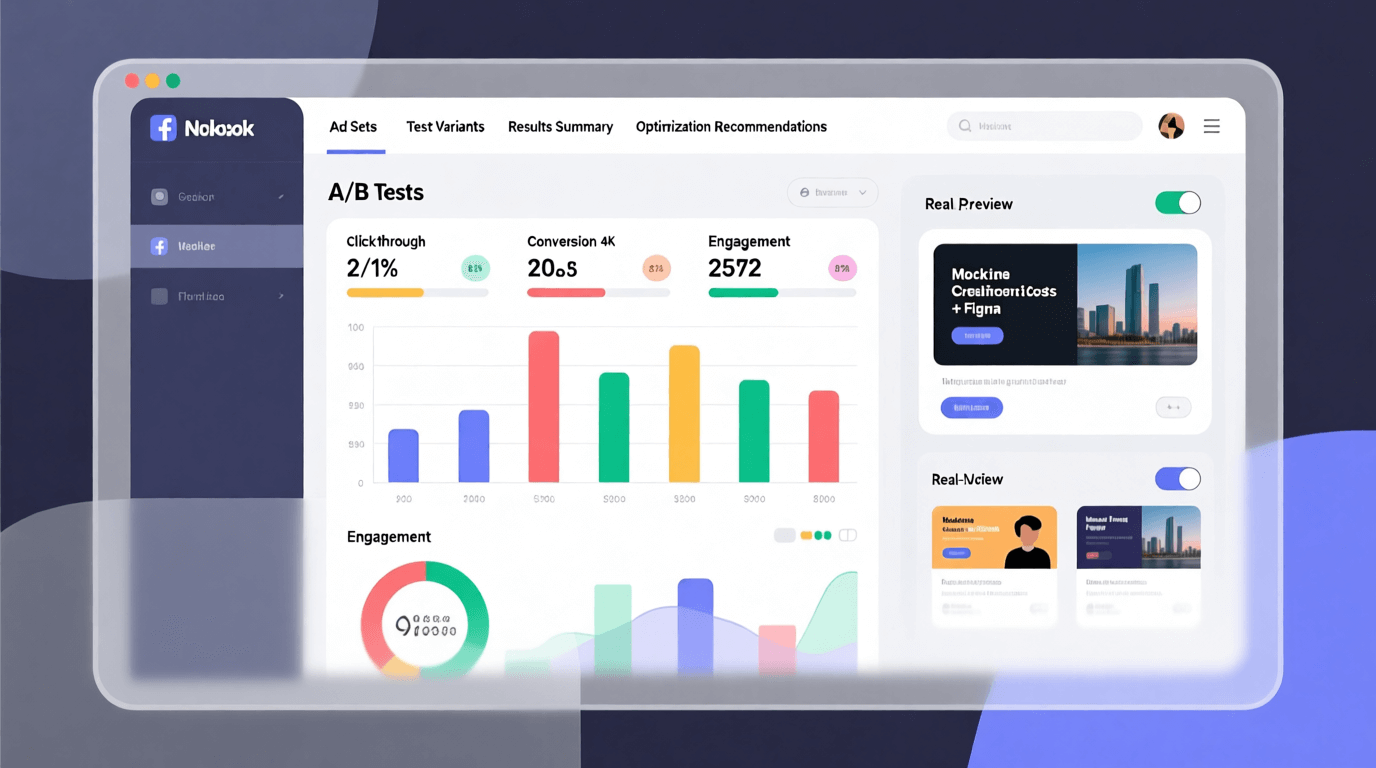
5 Mistakes That Kill Your Ads
1. Burying the Point
Don’t save the best for last. Your first sentence should deliver the main benefit or problem.
Bad: “We’re a company that started in 2019 with a mission to help small businesses grow through better marketing strategies and proven frameworks that work.”
Good: “Your Facebook ads are wasting money. Here’s how to fix them.”
2. Writing for Everyone
Generic copy converts nobody. Call out your specific audience.
Bad: “Our tool helps businesses grow”
Good: “Coaches making under $5K/month: Turn your Instagram into a client machine”
3. Using Weak CTAs
“Learn More” is what you write when you have no idea what you want people to do. Be specific.
- “Download the Free Template”
- “Book Your Strategy Call”
- “Get the First Month Free”
- “Claim Your Discount Code”
4. Focusing on Features
Nobody cares about your features. They care about what those features do for them.
Feature: “Our platform has 50+ templates”
Benefit: “Write your ad copy in 5 minutes instead of 5 hours”
5. Ignoring Mobile
Most people see your ad on mobile. Short paragraphs. Short sentences. Lots of white space. If your ad looks like a wall of text on mobile, you’ve already lost.
The text humanizer can help make your copy more conversational and mobile-friendly, but you still need to structure it right.
FAQ
What is the best copywriting formula for Facebook ads?
PAS (Problem, Agitate, Solution) wins most tests. It works because it starts with the customer’s pain point, makes them feel it, then offers relief. AIDA runs a close second for awareness campaigns.
How long should Facebook ad copy be in 2025?
Test both. Short copy (50-75 words) works for low-ticket impulse buys. Long copy (200-400 words) converts better for expensive or complex offers. The average conversion rate doesn’t change based on length alone – relevance matters more.
Should I use emojis in Facebook ad copy?
Yes, but sparingly. One or two emojis in the headline can boost visibility. More than three looks spammy and tanks credibility.
What conversion rate should I aim for on Facebook ads?
The 2025 average sits at 8.95% across all industries. Fitness sees 14.29%. Travel averages 2.82%. If you’re below 5%, your copy likely needs work before you blame targeting or creative.
How do I know which formula to use first?
Start with PAS if your audience knows they have a problem. Use AIDA if you’re introducing something new. When in doubt, test both against each other.
Can I use AI tools to write my Facebook ad copy?
Yes. Tools like the AI text generator can draft multiple variations quickly. But you need to edit for your specific audience and test what converts. AI writes the first draft, not the final version.
How often should I refresh my ad copy?
Every 2-4 weeks for cold traffic campaigns. Creative fatigue hits when the same people see the same ad too many times. Watch your frequency metric – once it hits 3+, time for new copy.
What’s the biggest mistake beginners make with Facebook ad copy?
Talking about themselves instead of the customer. Your ad should use “you” twice as often as “we” or “I.” Make it about them, not you.
Key Takeaways
- Facebook ad copy formulas remove guesswork – AIDA, PAS, BAB, and 4 C’s are proven structures that convert
- The 2025 average conversion rate is 8.95% – if you’re below 5%, your copy needs work
- Emotional triggers drive action – FOMO, relief, and transformation outperform logical appeals
- PAS (Problem, Agitate, Solution) wins most tests because it starts where the customer already is
- Your first line has 1.7 seconds on mobile to stop the scroll – make it count
- Test everything – headlines, CTAs, copy length, and formulas all impact conversion
- Write for one specific person, not everyone – generic copy converts nobody
- Benefits beat features – people buy outcomes, not specifications
- Tools like AI Free Forever can draft formula-based copy in minutes, but you still need to customize and test
- Mobile matters – most users see your ad on phones, so short paragraphs and clear structure win
Stop guessing what to write. Pick a formula, plug in your offer, and test. The difference between ads that work and ads that waste money is usually just structure. Now you have four structures that work. Use them.
Babatunde
Content Writer
Digital growth marketer with 5 years experience developing growth marketing strategies, PPC campaigns, SEO and SEA. I write and share useful AI tools and develop free tools for everyday use.


